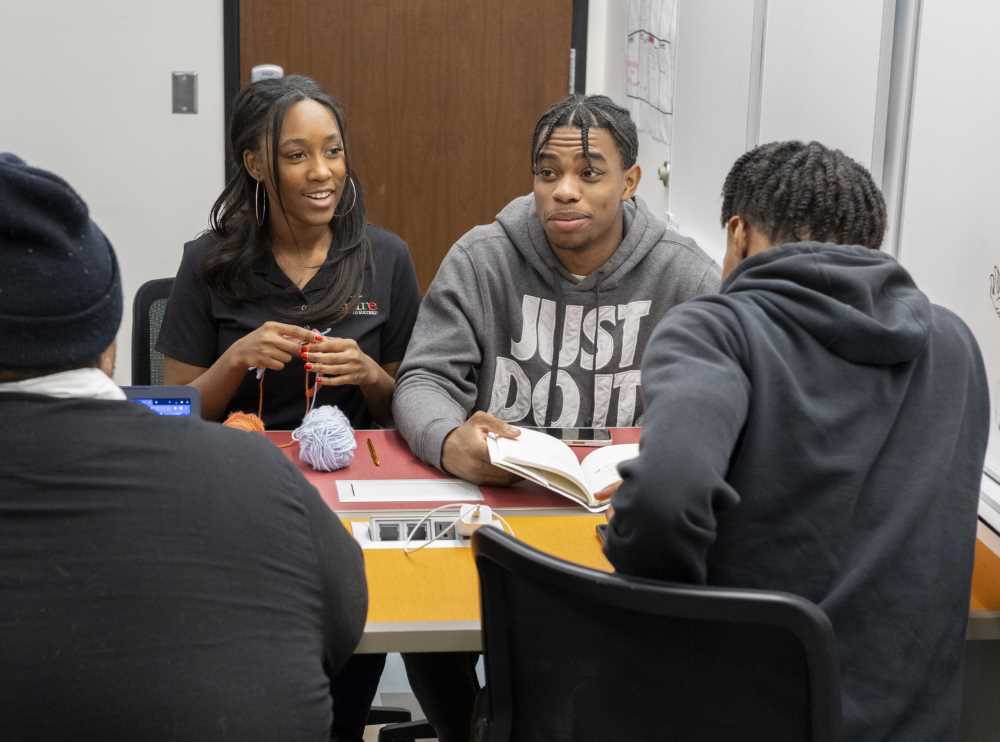Black Culture Center – “Uplifting, Fun & Stress-free" Community
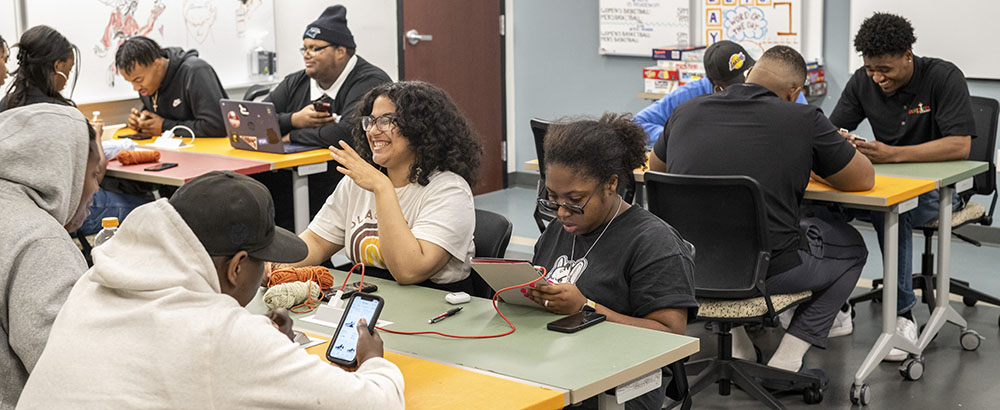
February 16, 2023 - 02:24 PM
 The Center for Black Culture and Student Success and the Umoja Aspire program have a big February planned to celebrate Black History Month.
The Center for Black Culture and Student Success and the Umoja Aspire program have a big February planned to celebrate Black History Month.
The new(ish) Center is in Room 140 on the south, Temple Ave., side of Building 6 (The Library faces the north side).
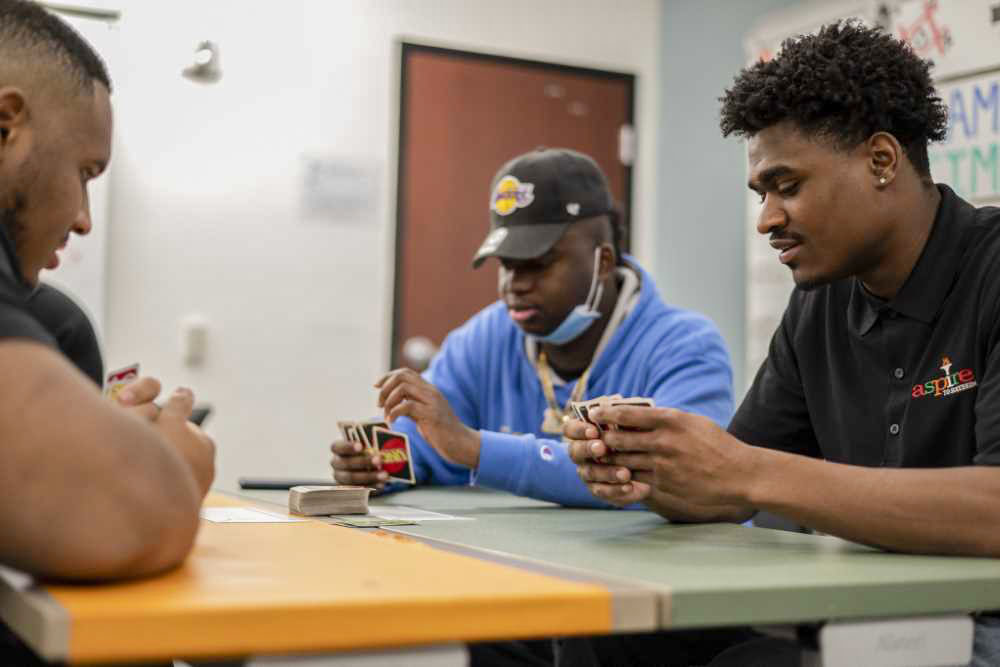
Next week, the first week of the Spring semester, will be a ‘Welcome Black Week’, where things will be going on at The Center each day, said Mercedes Cunningham, Coordinator for The Center. [Ed. note: Monday is a holiday]
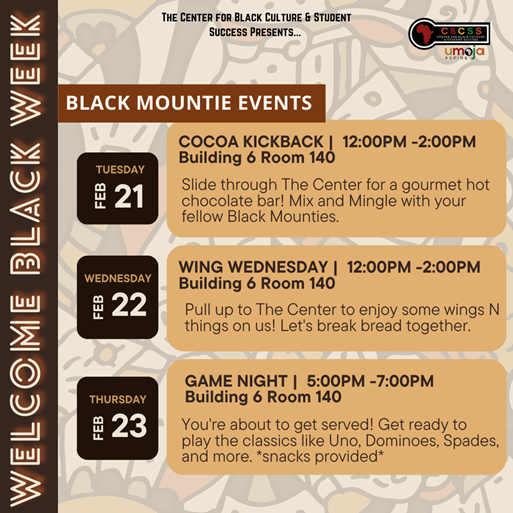 Tuesday, Feb. 21 (The Center, noon to 2 p.m.) – Hot Cocoa Kickback. A casual mix and mingle with a DIY hot chocolate bar.
Tuesday, Feb. 21 (The Center, noon to 2 p.m.) – Hot Cocoa Kickback. A casual mix and mingle with a DIY hot chocolate bar.- Wednesday, Feb. 22 (The Center, noon to 2 p.m.) – Wing Wednesday. Stop by for some wings, checkout The Center, and meet staff and students.
- Thursday, Feb. 23 (The Center, 5 p.m. to 7 p.m.) – Game Night. The Center’s large library of games will be available for an evening of fun.
- Friday, Feb. 24 (Founders Hall, noon to 2 p.m.) – Black Staff and Faculty Luncheon. An opportunity for black employees to connect with each other and figure out ways
to help the students succeed.
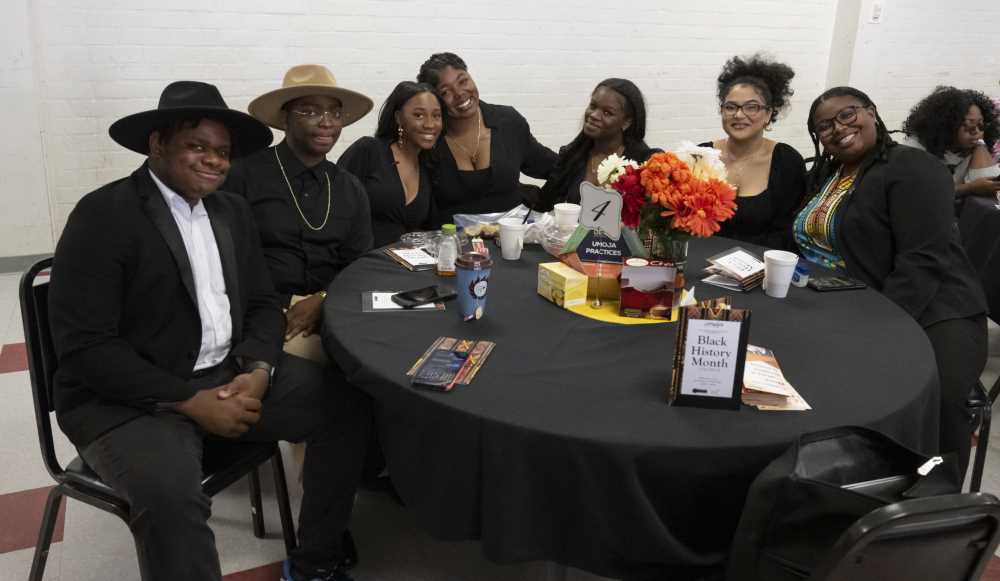
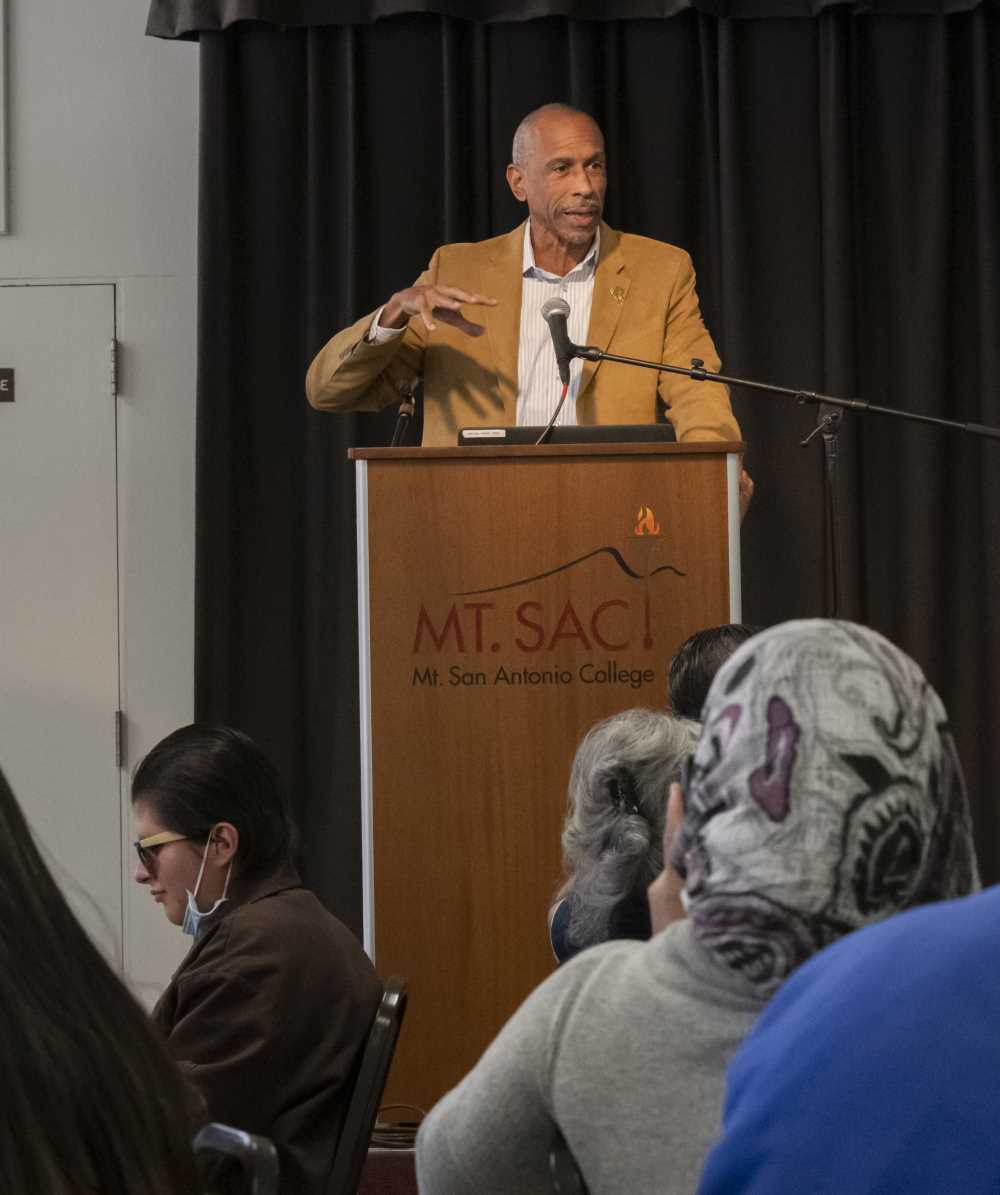
The Umoja Aspire program already held its annual Black History Month luncheon at the
beginning of the month, with a speech by Pedro A. Noguera, Dean of the USC Rossier School of Education. Noguera is recognized as a leading
scholar of urban public education, equity, and school reform. The event was also the
debut performance of The Center Singers, a vocal group that was created in The Center and opened the event singing ‘The Black
National Anthem’ - AKA “Lift Every Voice and Sing”. 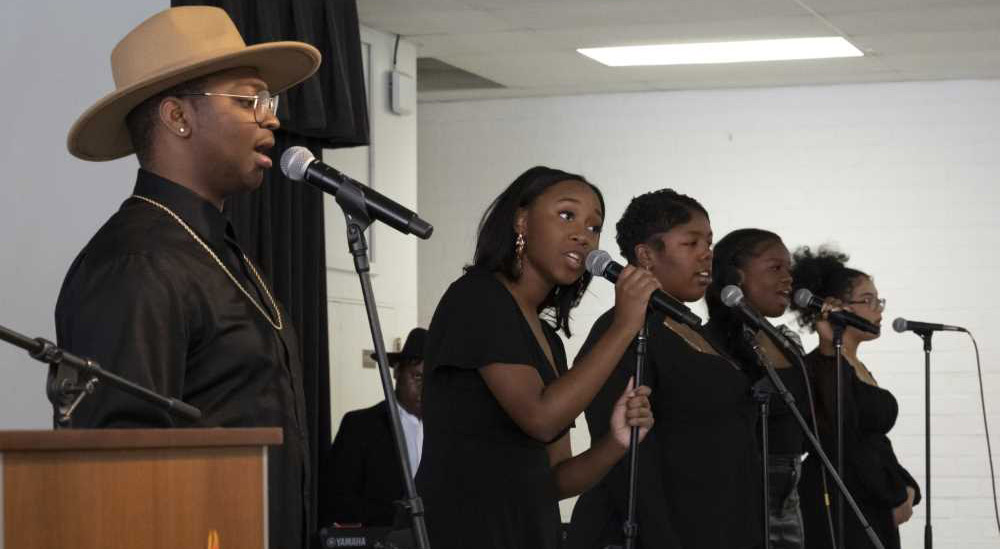
The Center for Black Culture and Student Success, which is the physical space of the
college’s black programs, requires no sign up and is open to students, faculty, and
staff to drop by. Umoja Aspire, on the other hand, is a full Student Services program
that requires students to join. About 10% of all black students at Mt. SAC belong
to the Aspire program, according to Banks. Those interested, should first stop by
The Center.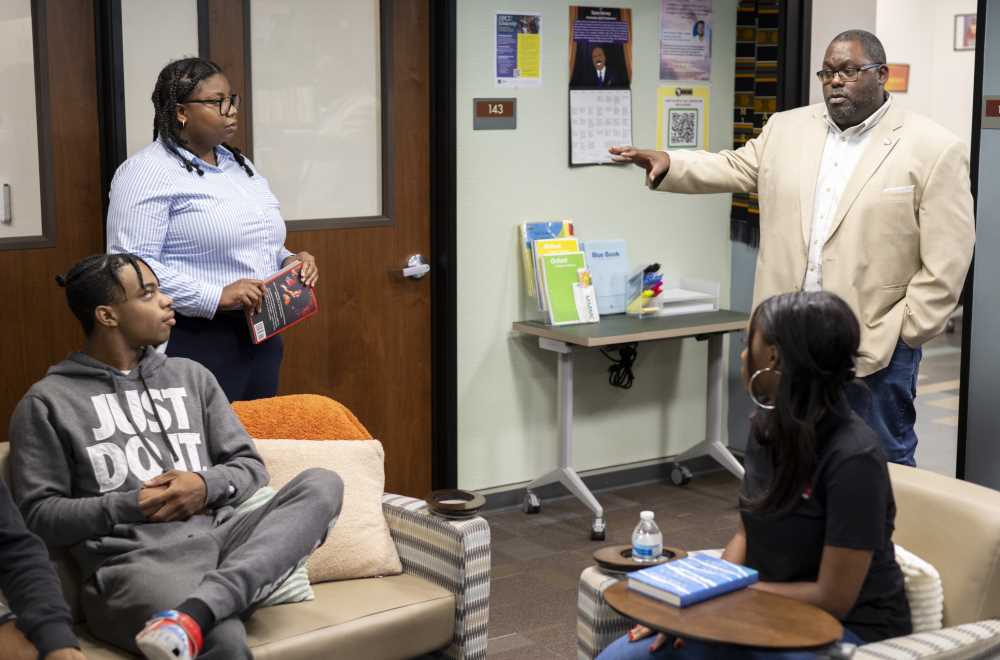
“The Center is here to serve the other 90%, as well as Umoja Aspire.” said Banks. “The Center was created as an environment for black students to feel comfortable where they can feel good about themselves, where they can learn something about themselves.”
Psychology major Jalen Lattimore said whenever he comes to The Center, “There are always friendly faces. Some days you come in to decompress. To gain focus. It’s very uplifting.”
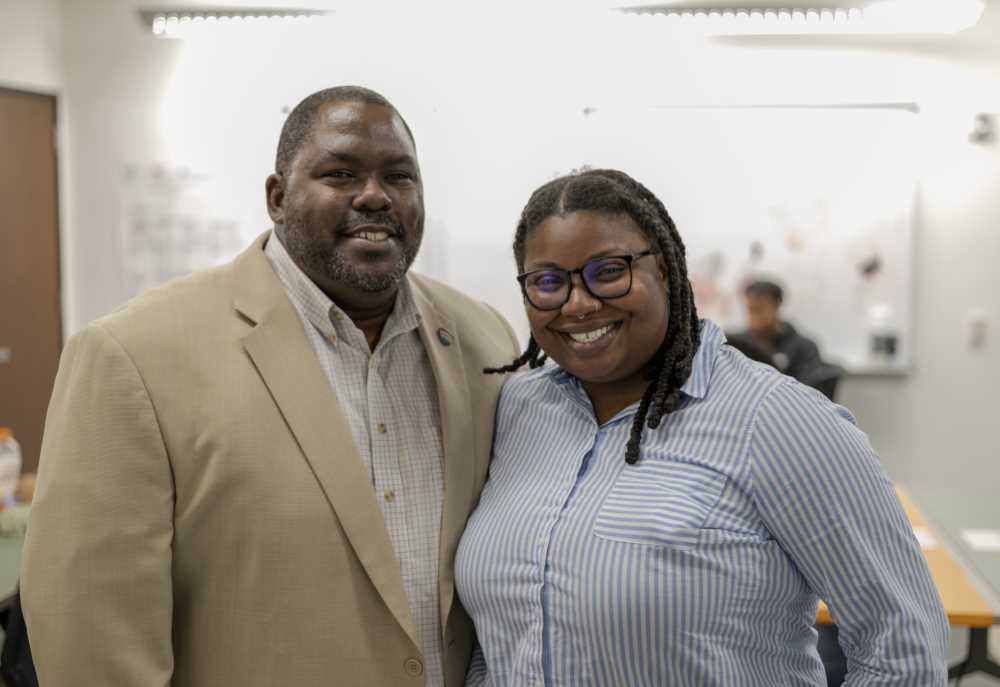 The overwhelming feeling one gets talking to Banks and Cunningham is that they just
want students (as well as staff and faculty) to stop by and check things out. They
have a feeling that most black students will feel at home in the space. If a student
wants to get even more involved academically, then they can sign up for Umoja Aspire
as well.
The overwhelming feeling one gets talking to Banks and Cunningham is that they just
want students (as well as staff and faculty) to stop by and check things out. They
have a feeling that most black students will feel at home in the space. If a student
wants to get even more involved academically, then they can sign up for Umoja Aspire
as well.
Comfort is something we found every student in The Center displaying. Kinesiology major Micah Myrichs can frequently be found taking naps after practice. He said about half of the Men’s Basketball team use The Center regularly.
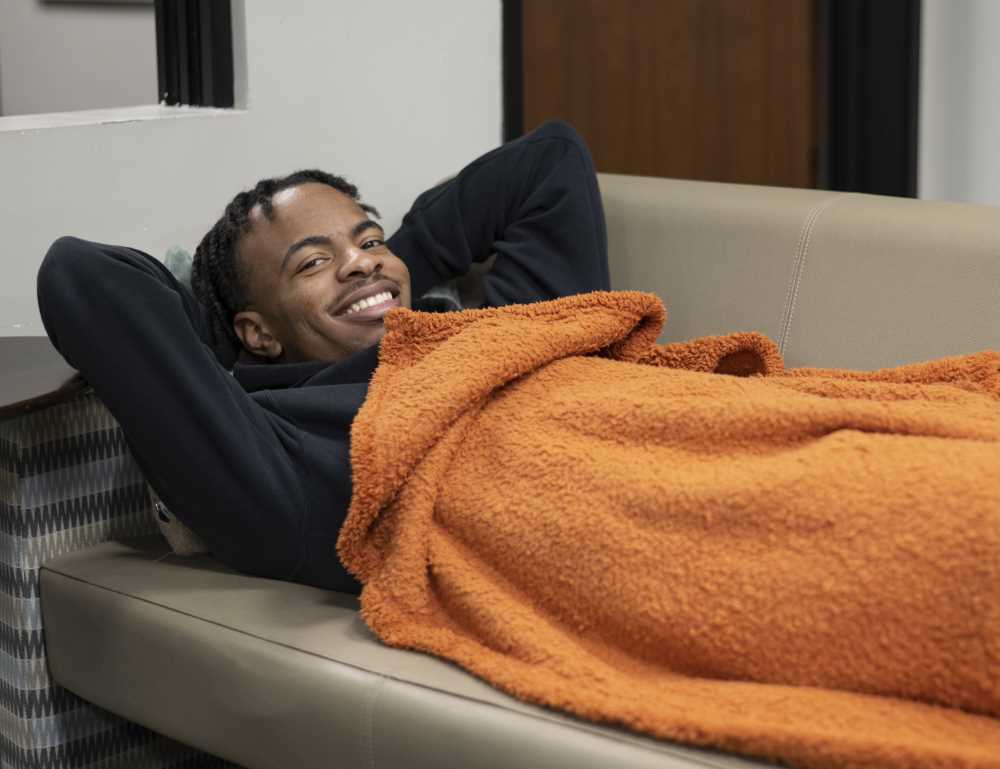
“The Center is a stress-free environment for me. I consider everybody in here family,” he said and pointed to how the staff and other students support him at their games.
Students at The Center will find a wide variety of resources available to them. The
space has a large recreation room, a computer lab and a quiet study room. The Center
has a snack and noodle bar to keep students energized, and maintains other services
like on-site guidance counselors, tutors, and even some professors holding their office
hours in The Center.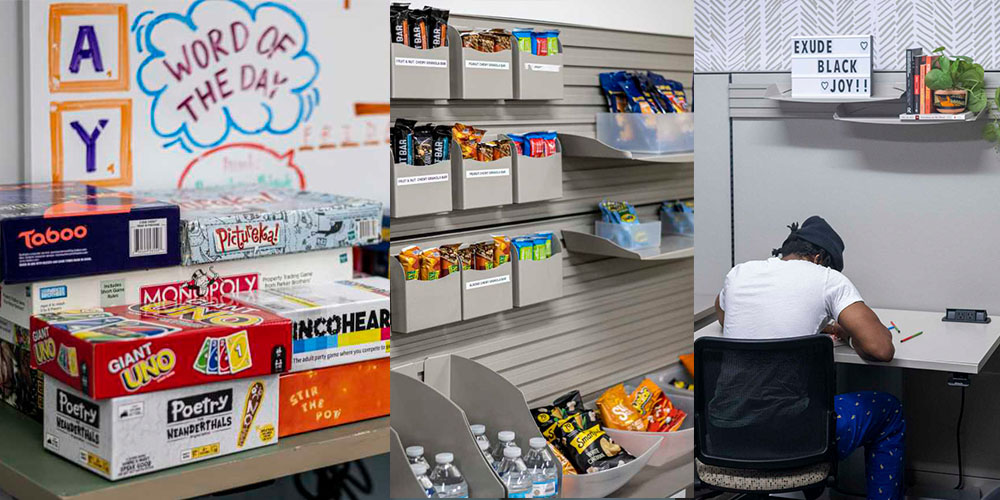
“During finals we had tutors here in various subjects,” said Biology major Clarke Collier. “The English tutors helped me write my History paper.”
Jalen said, “I’ve had professors approach me and ask if they can help with my schoolwork
for classes they don’t teach. It makes you feel as if you are not by yourself.”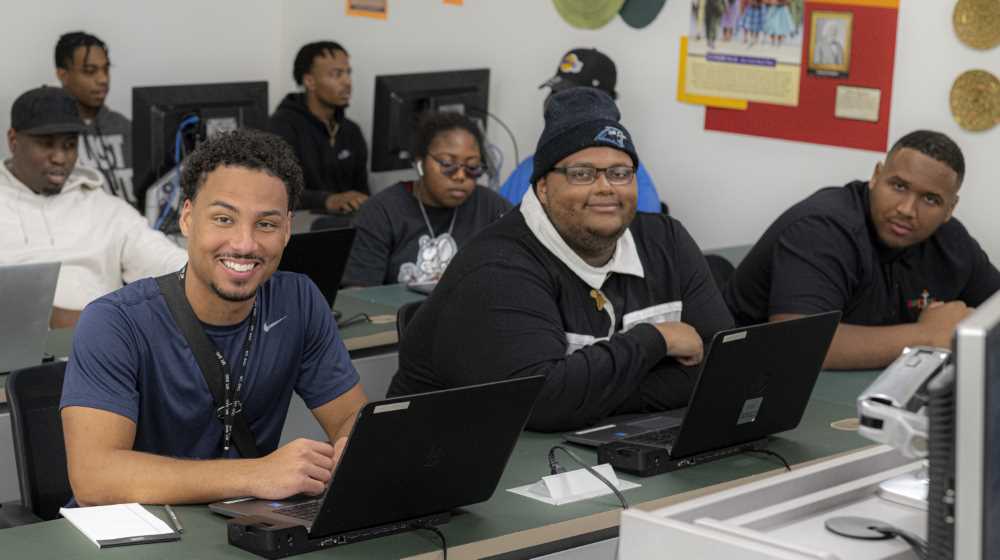
Having faculty come by demystifies the relationship between student and professor. English professor Andreana McCall can, sometimes, be found in the computer lab helping students with their studies, for example.
“I’ve grown very close with some of the counselors here,” said Clarke. “For students just starting college, the counselors will come up and ask them about their plans. Although this is a fun, communal space, it is also a space that gets you from one place to the next.”
“We don’t want our students to have to go out and find campus resources. We are looking to bring all the resources on this campus to our students right here,” said Banks. The students we talked with agreed that it can be intimidating to reach out for help, especially on a campus as large as Mt. SAC.
Cunningham said, “Black Thursdays are an easy, non-committal way to check out The Center.“
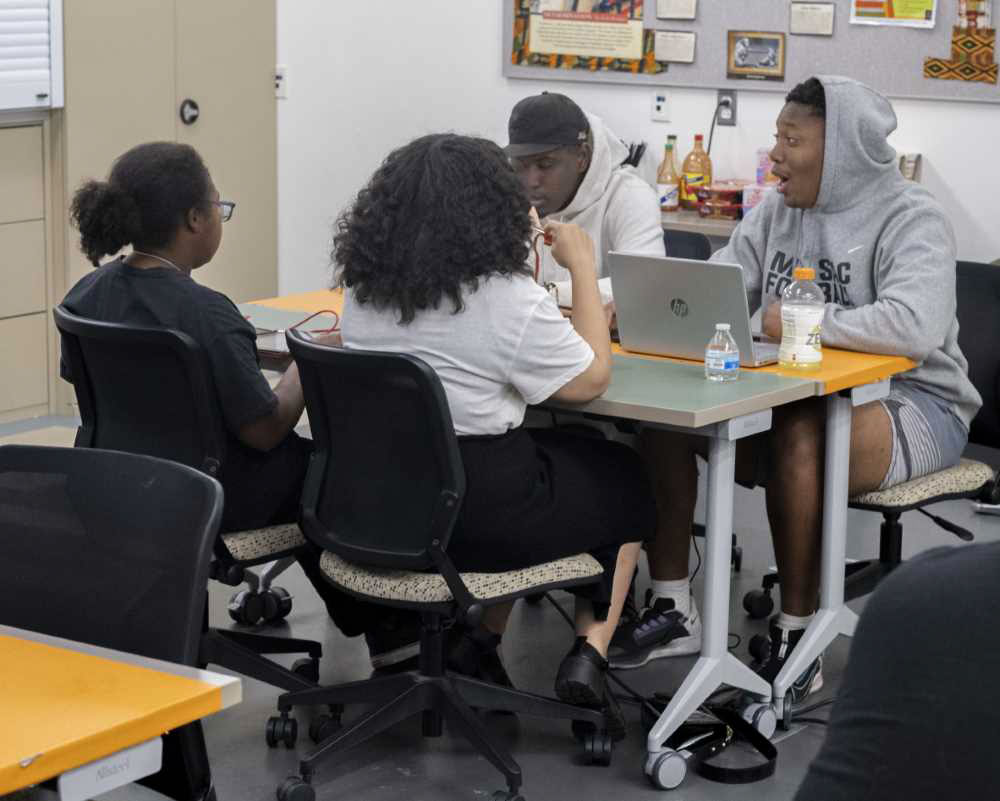 Every Thursday from noon to 2 p.m. in Fall and Spring, staff and students set up a
canopy outside of Building 6, to let students, faculty and staff get to know what
The Center is all about. There is music, snacks and games.
Every Thursday from noon to 2 p.m. in Fall and Spring, staff and students set up a
canopy outside of Building 6, to let students, faculty and staff get to know what
The Center is all about. There is music, snacks and games.
“It gives us an excuse to exude joy. To feel alive and be happy to be here,” explains Cunningham.
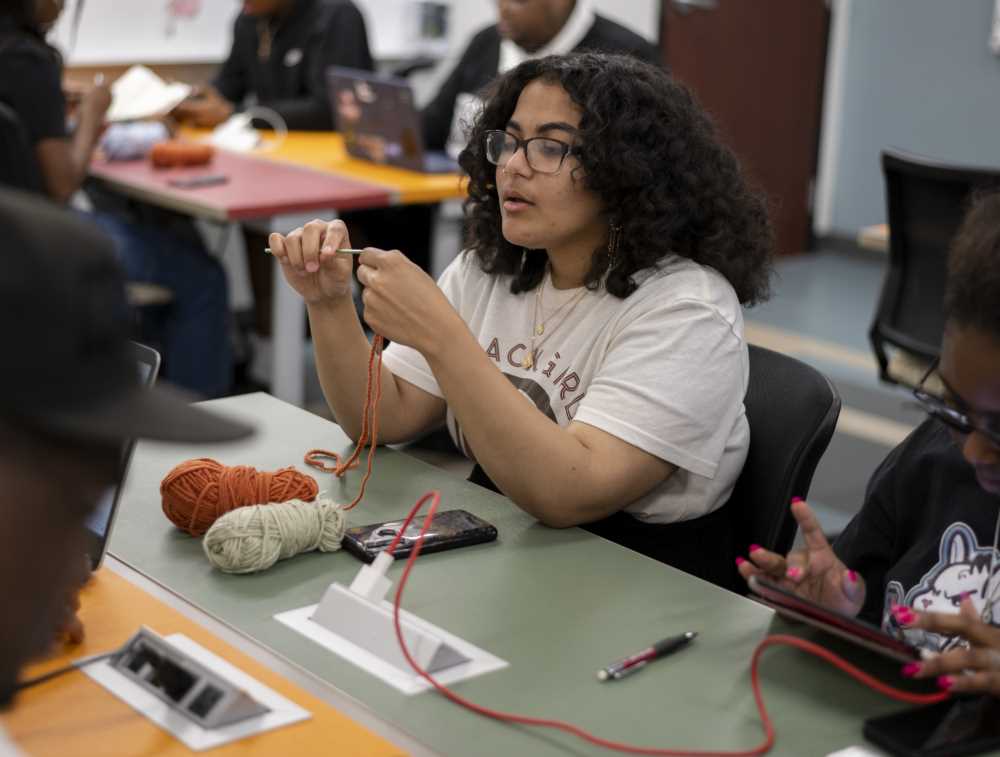 Students at The Center get to take part in fields trips, outings and experiences,
like the Black College Expo that happened last month. Every semester, The Center tries
to take students on a black cultural experience, like the Alvin Ailey American Dance Theater.
Students at The Center get to take part in fields trips, outings and experiences,
like the Black College Expo that happened last month. Every semester, The Center tries
to take students on a black cultural experience, like the Alvin Ailey American Dance Theater.
The big annual event for the Umoja Aspire program, so named as it belongs to the Umoja Community – a group of similar programs at more than 70 other community colleges, is the Umoja Conference itself. Frequently, it is the students’ first-ever experience at any sort of conference.
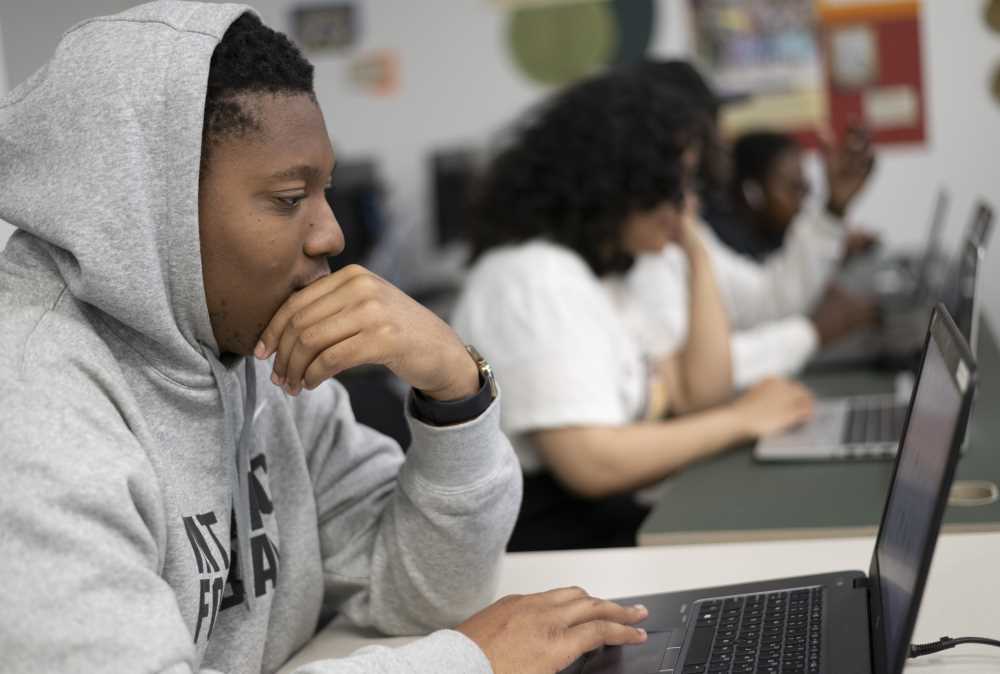 “Some of our students have never even stayed in a hotel or flown anywhere,” said Cunningham.
“Some of our students have never even stayed in a hotel or flown anywhere,” said Cunningham.
“We are bringing our students into a room with 2,000 other black college students,” said Banks, “many of them having the same experiences as our students.”
The conference is a major event and can attract distinguished, big-name speakers in the black community. “It’s a seminal experience,” he said.
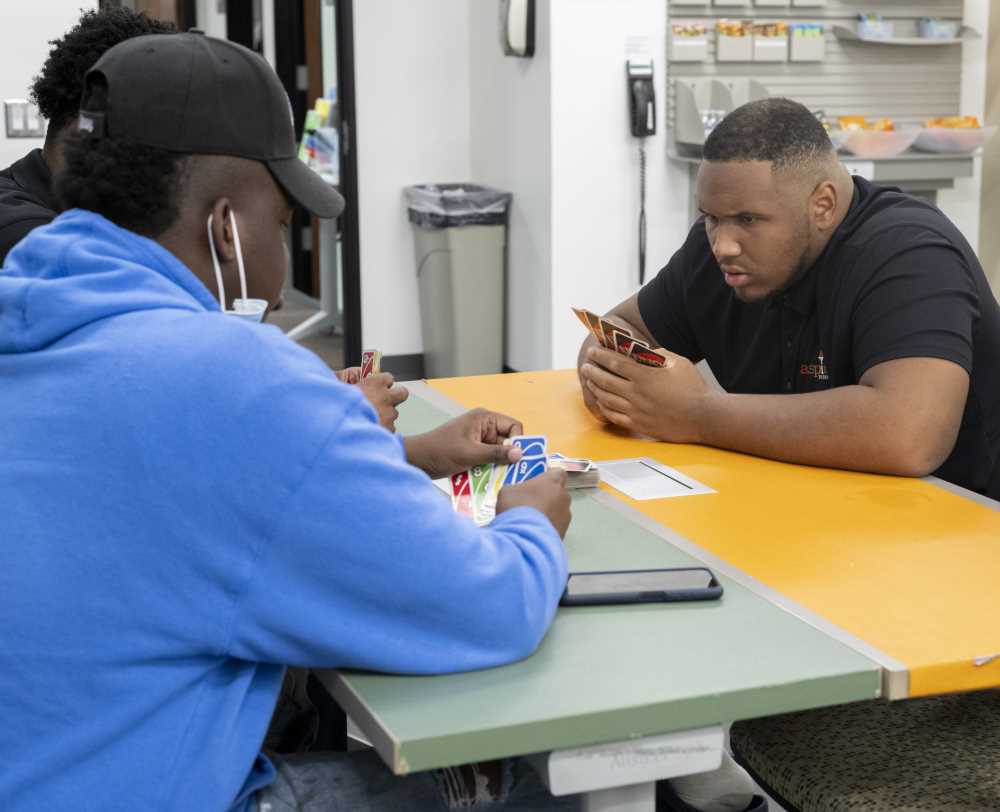 Cunningham, who is a Mt. SAC and Umoja Aspire alum, went to the conference when she
was a student and it was a game-changer for her. “It solidified what I wanted to be
doing in my career.”
Cunningham, who is a Mt. SAC and Umoja Aspire alum, went to the conference when she
was a student and it was a game-changer for her. “It solidified what I wanted to be
doing in my career.”
Now, as a staff member taking students to it, she realizes many of the Aspire students are having such meaningful experiences at the conference. “Students leave feeling so rejuvenated, alive and motivated.”
“We are looking at the Center for Black Culture and Student Success as being more than just a place to meet a counselor and to serve their academic needs,” said Banks. “We are looking at serving the student holistically.”
Banks said that he grew up in a black community, with black neighbors, and had black teachers, “Never once did I feel bad about being black. Never once did I question my identity. But the majority of our students did not have that same type of experience.”
“Most of our students are used to being the only black student in their class, so we need to establish what it means to be part of black culture,” said Banks. “Students should feel good about identifying as black. They might have only learned what it means to be black from television.”
“The Umoja Aspire Program is like the ‘academic arm’ of The Center,” according to Banks. “Every student in the program has an academic goal. We ask this of each student. If they want to be part of this program, then we will help them achieve that goal.”
Cunningham tells the story of an immigrant from China, who did not identify as black, who joined the Aspire program some years ago (and later his little sister joined). “He joined because he felt comfortable. Because he felt love.”
Clarke breaks The Center’s importance down, and how it differs from the academically focused Umoja Aspire. “Community college can be pretty isolating with everyone commuting here. My first semester, I did not have any friends here that I did not already go to high school with.” She noted how places like The Center operate as social hubs like fraternities and sororities do on University campuses. “Having a place outside of your classes to meet people is important. It is super nice to have community. It makes college a lot easier to navigate.”
Banks said his philosophy in running The Center is simple: “If you come in and have a good experience, you are going to want to have that experience again and again.”
Micah certainly has good experiences at The Center. “Every time I go, there is always a laugh. Always a good time.”
